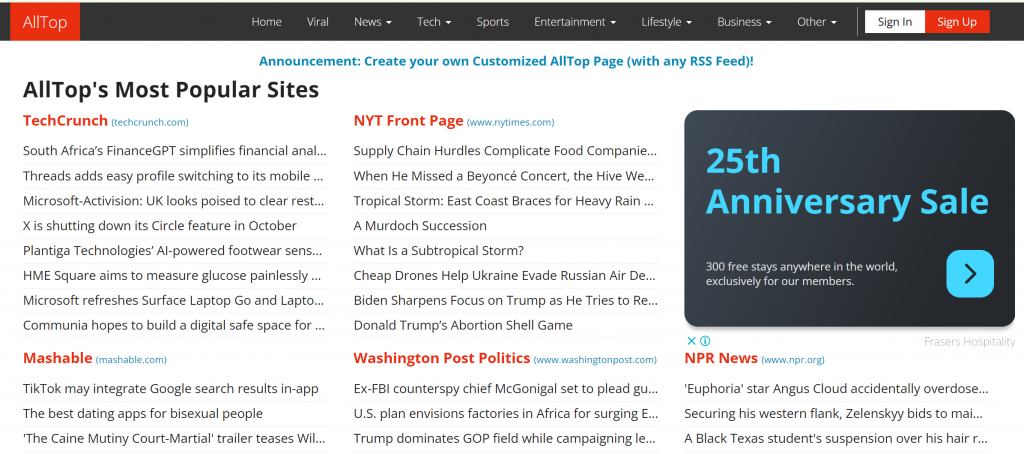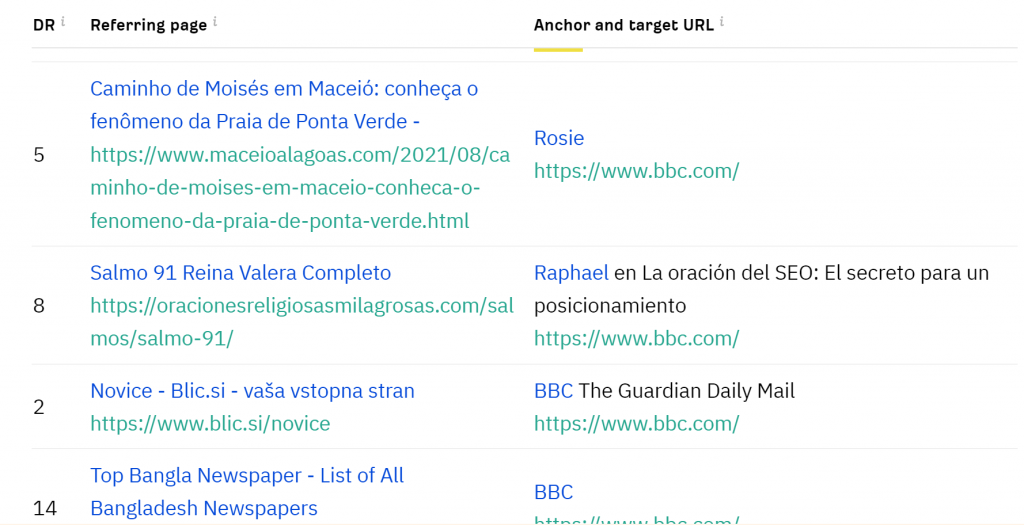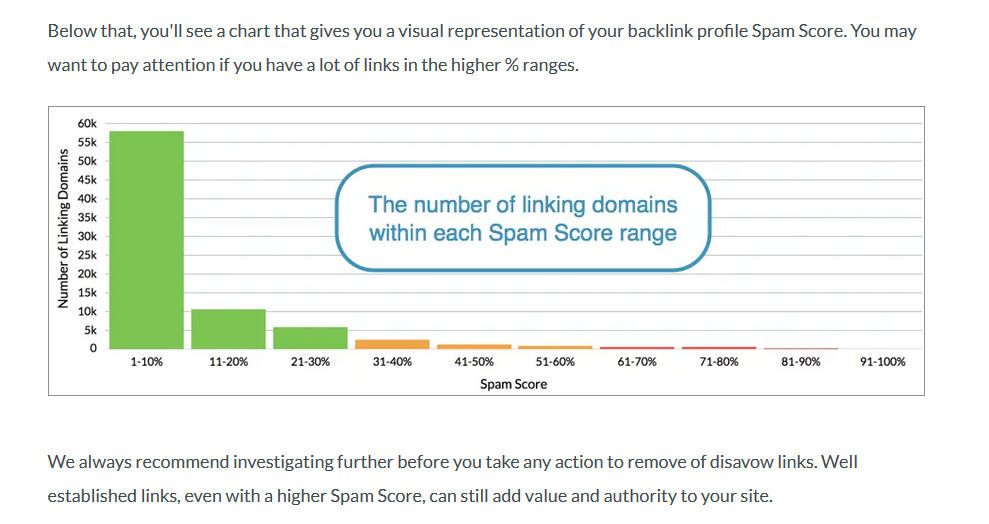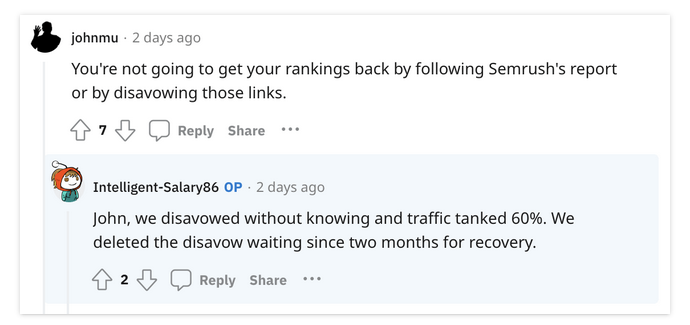Article at-a-glance: Curious about how "toxic backlinks" affect your website's SEO? This article demystifies the topic so you can focus on what actually boosts your ranking. You'll learn: - What are toxic backlinks and how they differ from quality backlinks. - 5 reasons why you shouldn’t worry about toxic backlinks because they are normal, SEO tools & SEOs exaggerate impact to get paid for tasks only core to their value proposition, etc. - The real-world impact of bad links on your website (hint: tests have shown that they can even be beneficial for your website). - What happens if you still want to remove toxic backlinks. - When and how to take action against toxic backlinks, if at all necessary.
We all know how backlinks are like gold in this game of content marketing. These are the links from other websites pointing to yours, signaling to search engines like Google that your site is a valuable resource worth ranking.
But what about ‘toxic backlinks‘, a term invented by SEO tools such as Semrush, Ahrefs, and Moz to create a new enemy for SEOs to battle against?” Can these harmful-sounding links really damage your site SEO?
Here’s the kicker: Google doesn’t see it that way. As horrifying as they sound, Google itself doesn’t even have an official concept of a toxic backlink.
In fact, we have proof that these so-called toxic backlinks are just a marketing gimmick and have little to no actual impact on a website’s online standing with search engines.
So why am I talking about it?
Well, because understanding the actual impact of these supposedly bad links is crucial. It helps you avoid wasting time on unnecessary cleanup and lets you focus on what truly matters for your content marketing strategy.
So sit tight, because you’re about to learn why there’s no need to lose sleep over toxic backlinks. Let’s dig into the nitty-gritty of backlinks, what Google thinks of them, and how they actually affect your site SEO.
What Are Toxic Backlinks?
So, let’s cut to the chase: what exactly are toxic backlinks?
In the simplest terms, toxic backlinks are links from low-quality, spammy, or irrelevant websites that point to your website.
Now, why are they termed ‘toxic’? Because they’re believed to potentially harm your site’s search engine ranking, which isn’t true.
However, it’s essential to note that Google’s advanced algorithms are increasingly better at ignoring such low-quality links.
In short, toxic backlinks don’t actually harm your website. In fact, removing them can actually hurt your site (more on this below).
Characteristics of Toxic Backlinks According to SEO Tools
SEO tools like Semrush and Ahrefs define toxic backlinks according to these four main characteristics which are:
- Automated: Often, these backlinks are generated through automated methods rather than genuine interest or relevancy.
- Irrelevant Content: These links often come from sites that have no relation to your niche or industry.
- Low Domain Authority: Generally, toxic backlinks come from new websites with low domain authority and poor reputation.
- It’s worth noting that Domain Authority (DA) is a KPI created by Moz. This is similar to “toxic backlinks”, a metric created by a third party tool that seeks to establish its usefulness as a tool; and not something that Google actually looks at.
- Over-Optimized Anchor Text: Sometimes, these backlinks use the same, exact-match anchor text repeatedly (up to across hundreds of sites), a sign that the link was not naturally acquired, especially for a new site.

Comparison: Toxic Backlinks vs. Quality Backlinks
Curious what makes a backlink toxic or high-quality?
| Feature | Toxic Backlinks | Quality Backlinks |
| Origin | Low-quality, spammy sites | High-quality, relevant sites |
| Anchor Text | Over-optimized, exact-match | Varied, natural language |
| Relevance | Irrelevant to your niche | Relevant to your content |
| Domain Authority | Low | High |
That said, toxic backlinks can still be beneficial and shouldn’t be disavowed.
Real-World Examples of Toxic Backlinks
Now, let’s see some examples of toxic backlinks in action:
- A website known for spreading malware links to your site.
- A link that automatically generated in the comments section of a blog post by a spam bot.
- An irrelevant business, like a pet food shop, linking to your tech blog.
Most importantly, while these examples may seem concerning at face value, it’s crucial to understand that Google’s algorithms have become astute at differentiating between good and bad links. Therefore, the impact of such links on your SEO is increasingly negligible.
5 Reasons Why You Shouldn’t Worry About Toxic Backlinks
Now, let’s learn why worrying about toxic backlinks is just a waste of time.
#1 Google’s Algorithm Updates Ignore Bad Links
One of the landmark Google algorithmic updates that focused on backlinks was Google Penguin, introduced in 2012. The Penguin update initially aimed to penalize websites engaged in link schemes or possessing a high number of low-quality or ‘toxic’ backlinks.
With each iteration and evolution of its search algorithm, Google improves its ability to differentiate between valuable, relevant backlinks and those considered low-quality or toxic.
Therefore, while many worry about the potential harm of toxic backlinks, the algorithms are now designed to mostly ignore such bad links rather than penalize the associated websites.
Remember that if Google penalized toxic links, anyone could sabotage a third party site by just mass-creating bad backlinks!
#2 John Mueller: Google has No Concept of a Toxic Domain
Google’s John Mueller has frequently reiterated that the search engine’s advanced algorithms can ignore low-quality links.

In addition, John has previously said that Google does not have a concept of a toxic domain and suggested that most websites don’t have to worry about toxic backlinks affecting their rankings.
#3 Toxic Backlinks Are a Favorite Topic of SEOs
As I do hiring for AmpiFire, I occasionally run into SEOs who focus on the importance of KPIs conceived by SEO tools like Semrush, without fully understanding their true importance in generating results that matter to brands and businesses.
This is one case where a SEO gets in their own way by overthinking backlink profiles and technical theory that actually has no impact on brand authority and heightening their business’ visibility online.
Any big site will get links from low quality sites as there are a lot of automated scrapers and spam sites which pull from real sites and link back to them.
But in reality it’s nothing to worry about. Otherwise we could all go out and sabotage our competitors by building a few spammy links!

SEOs either make money in 2 ways: getting actual results, or getting paid for tasks based on theory not reality, which is why we argue the SEO industry is largely a scam and not legit.
#4 Fear Mongering Drives the Obsession on Toxic Backlinks
The obsession on toxic backlinks came from occasional FUD (fear, uncertainty & doubt) campaigns by Google to scare SEOs away from aggressive link building tactics, which they do because it largely works.
We don’t advocate link building, but instead click building, something you’d do regardless of whether Google existed or not, which in turn feeds the algorithm just what it wants. This is why we have such huge success in Google as a side effect of the AmpiFire Effect.
#5 Toxic Backlinks Benefits SEO Tool Makers More
The toxic backlink obsession has also been very beneficial for SEOs and SEO software companies to persuade you that this is important so they can charge you a ton of money for low value add tasks, and it works!
John Mueller even said on Reddit that “Toxic links is all about selling tools.” And advised readers “don’t get hung up about it.”

The thing is that you must ask yourself “why have a disavow tool if it’s unnecessary to do so in the first place?”
The truth is Google is just getting free data from SEOs on which links may not be good signals of popularity, and so can be ignored.
So, millions are actually spent every year needlessly removing and disavowing links, only to actually train Google, not to improve your site in any way!

SEO Impact of Toxic Backlinks
I’ve seen many examples where toxic backlinks still increase rankings, and the definition of toxic is extremely loose from a small unknown site to anything that is automated to viagra spam.
Not only that, the SEO research tools definitely over-estimate the presence of toxic links, and it’s probably in their interest to do so as it keeps people using their tools.
If a smaller site links to me I’m happy about it, and if a weird site scrapes us or links to us, it’s not worth any attention, and could even be beneficial.
Some people who are brand sensitive overthink this as if thousands of people will see these pages with their link on. The truth is nobody but the robots will see them. Not only that, if the site has an overall low quality, it won’t rank, and the content is not seen anyway. So, why care?
Again, this is another example of putting effort into something that makes no difference to results (or may even lower results).
Remember, backlink quality often outweighs quantity. Instead of panicking over a few bad links, focus your energy on building a robust profile of high-quality backlinks.
Toxic backlinks are beneficial because they’re normal. So, focus on consistently creating quality content and what shows up in Google when people search for you and your products.
3 Cases When Toxic Backlinks Can Hurt You
While Google’s algorithms have become increasingly adept at identifying and disregarding low-quality backlinks, there are specific scenarios where these links can become a concern.
- Exceptionally rare massive anchor text spamming on a brand new site, can cause temporary penalties, and drop rankings for that specific term, but not the entire domain. However, this is very hard to do, and last time I saw it was several years ago.
- When you show off that you are manipulating Google (read: make them look stupid), they will penalize you manually. This is true for any cases (not just toxic backlinks) where you act like you have power over Google.
- Reciprocal linking at extremes, but this is more to do with your outlinking, than backlinks because it proves you made the action as it was on your site. So if you find 2000 sites and link to them to get them to link to you, it can cause them to be ignored. But again this is rare. However, it still happens, but arguably not a penalty as you are just having the benefit of those links ignored.
In summary, Google’s evolving algorithms, official statements, and our stance indicate that website owners generally should not panic over toxic backlinks. The focus should instead be on building high-quality, relevant links that offer genuine value to users.
What Happens If I Still Remove Bad Links?
Many website owners who initially experienced a dip in rankings found stability or improvement after Google’s algorithm updates, without them taking any action to remove any so-called toxic backlinks.

So by now, you should be convinced that having toxic backlinks to your site is not a bad thing.
But if you still want to remove the back links, here’s what will happen:
Immediate Effects: Ranking and Traffic Changes
After successfully removing toxic backlinks, website owners often notice shifts in their site rankings and traffic levels.
These changes can go either way—up or down—depending on various factors like the overall link profile and content quality.

However, some experience no significant change, which aligns with the general understanding that Google’s algorithms are well-equipped to ignore low-quality links.
Risks Involved: Short-Term Ranking Drops and Resource Investment
It’s important to understand that bad link removal isn’t risk-free.
Initially, you might experience a slight drop or uptick in rankings. This is usually temporary and often a byproduct of the search engine recalibrating your site’s overall trustworthiness. In the grand scheme of things, an irrelevant change in KPIs.
But the process itself can be time-consuming and may require an investment in SEO tools or professional services.
Therefore, it’s crucial to weigh the potential benefits against the resources you’ll need to invest in this process.
Ask yourself if the investment in resources required is worth any temporary impact on rankings, assuming this impact is even positive…what if the impact is negative?
Steps to Remove Bad Backlinks
If you’ve identified toxic backlinks pointing to your website and are ready to take action, here’s a comprehensive guide detailing the steps you should follow to remove them effectively.
But we recommend NOT to do this for all the reasons noted above; it’s simply not worth your time and resources.
Step 1: Creating a List of Toxic Backlinks
- Use a Backlink Checker: Start by using a reliable backlink checker tool like Ahrefs, Moz, or SEMrush to analyze your website’s backlink profile.
- Identify Suspicious Links: Filter for backlinks with low domain authority, from unrelated niches, or those emanating from spammy websites.
- Export the List: Once identified, export this list to a spreadsheet for easier management.
Step 2: Contacting Webmasters for Link Removal
- Find Contact Information: Utilize the “Contact Us” pages or social media profiles to locate the webmaster’s contact details.
- Draft a Polite Email: Write a courteous email requesting the removal of the bad backlink. Be direct and professional in your communication.
- Send Follow-Ups: If you don’t get a response within a week or two, send a follow-up email.
Step 3: Using Google’s Disavow Tool
- Prepare a Text File: Create a .txt file with all the URLs you wish to disavow. Follow Google’s format guidelines for this.
- Access Google’s Disavow Tool: Navigate to the Google Disavow Tool within the Google Search Console.
- Upload and Submit: Upload your .txt file and submit it for Google’s consideration. Note that this action should be a last resort if you’re unable to get the links removed manually.
Step 4: Monitoring Results and Rankings After Removal
- Check Google Search Console: Regularly visit Google Search Console to monitor changes in your site’s performance.
- Use Analytics Tools: Employ analytics tools to track any changes in traffic, user behavior, or keyword rankings.
- Adjust Strategy: If needed, revisit your backlink profile and remove any newly acquired bad links.
Managing the Toxic Backlinks Landscape
Managing the complex landscape of backlinks can seem daunting, but the key takeaway is not to live in fear of toxic backlinks because they’re normal. All links, even the toxic ones, are worth keeping.
Most importantly, Google’s advanced algorithms have become adept at identifying and filtering out low-quality backlinks, making it less likely that these links will harm your site’s SEO.
Don’t be fooled by SEOs or SEO tools trying to justify their services; it’s fear mongering for cash, even if they probably believe it themselves.
Therefore, focus on building quality content and backlinks that offer genuine value to site visitors as well as to boost your site for better search engine rankings.
Because vigilance is crucial, periodically audit your backlink profile and take corrective actions like contacting webmasters or using Google’s Disavow tool only when necessary.
Schedule an appointment now with our team to see how AmpiFire can do to further supercharge your website’s online visibility.
Author
-

CEO and Co-Founder at AmpiFire. Book a call with the team by clicking the link below.
Related Posts

Manual Link Outreach Process: How To Build High Authority Niche Blog Backlinks & Examples
Learn how to gain access to 10K+ sites without breaking the bank with our step-by-step guide to high-authority link outreach

Content Production vs Link Building: Costs, Benefits, Advantages & Challenges
Unveil the synergy between content production and link building in this insightful guide that demonstrates the power of these two…

The Harsh Truth About Ranking Your Site On Page 1 Of Google | AmpiFire Podcast – Episode #2
In our latest episode, Jay struggles with backlinks and I explain How to rank in Google as though he’s a…

Does Google Hate AI Content? ChatGPT’s Stance on Detection, SEO, Indexing, & Duplicate Penalties
Learn how Google views AI Chat GPT content through the lens of Chat GPT. Discover the impact of indexing, duplicate…

How To Fix Your Online Reputation & Get A Second Chance With Google
Google is the most popular search engine on the planet, and for good reason. With over 8.5 billion searches every…

Setting Up Google Workspace for Sending Emails via SMTP
Learn how to set up Google Workspace for sending emails via SMTP with our step-by-step guide to enhance your business…









